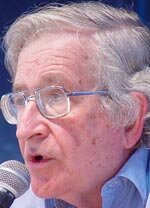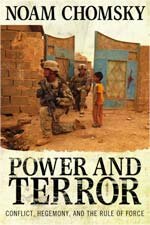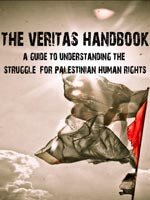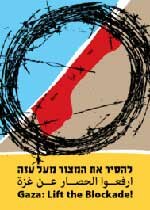By Chaim Levinson, Haaretz – 21 Aug 2009
www.haaretz.com/hasen/spages/1109015.html
Despite the video footage and the international public outcry it generated, the Judea and Samaria police are closing the case of a severe beating of three Palestinians by masked settlers, without having managed to produce even a single suspect, according to the complete investigation file obtained by Haaretz.
The beating, which was filmed by an eyewitness, took place on June 8, 2008 in a field near the settlement of Sussia. Tamam Nawaja, 57, her husband Khalil, 70, and their relative Amran were herding their flocks near their encampment, some three kilometers from Sussia. Three young men, residents of the area, two of them masked, approached them and requested that they leave. When they refused, the settlers walked away.
About half an hour later, four masked men came down from a nearby mountain, holding clubs, and began beating the Palestinians. Another family member who was nearby called for help. Soldiers who arrived in a military vehicle gave the victims first aid, and an ambulance took Tamam Nawaja to the Soroka University Hospital in Beer Sheva. The other injured Palestinians were taken to a hospital in Hebron.
The incident was filmed by a relative of Tamam, who had a camera given to her by the B’Tselem human rights group as part of their camera distribution project, in which cameras are handed out to Palestinians living in high-conflict areas. The video shows one settler approaching the area on a tractor, followed by the four masked men. The graphic footage, which shows the settlers swing their clubs into the shepherds, was transmitted in Israel and around the world and generated furious condemnation.
Although the police described the incident at the time as “grave,” nine days passed before police forces came to search a nearby farm, detaining some potential suspects. The search also produced several shirts similar to the ones in the video clip, two picks with wooden handles resembling clubs, a map of the area, and five 9 mm bullets. However, the police forensics department had not been able to find blood traces on the findings, or to produce DNA from the shirts. The connection of the farm to the events first came up in the interrogation of a detained minor, a resident of one of the nearby settlements, who was in the area when the attack took place.
Minor: They called me on my cell phone and told me not to go south of Sussia, because there’s a mess going down. I said fine, if there’s a mess I won’t go.
Interrogator: Who called you?
Minor: From the farm – one of the shepherds, he’s new, I don’t know his name.
Interrogator: Who told you about the incident?
Minor: The shepherds at the farm.
Interrogator: Who are the shepherds who told you about the incident and what did they tell you?
Minor: The shepherds were [names withheld]. They told me about the incident and said I shouldn’t go there anymore.
Interrogator: Is there anything else you’d like to say?
Minor: When I call and I ask for a patrol they don’t show up, when I’m herding and someone threatens me, they don’t show up, but when an Arab calls everyone shows up.
Despite the lack of cooperation, the investigators did manage to compile a list of potential suspects, all local residents, who were interrogated some time later. The owner of the farm from which the suspects left, Dalia Har Sinai, was never interrogated or questioned.
Suspect A (all names are withheld), a 21-year-old shepherd from the farm, opened his interrogation with a statement:
A: I don’t understand what links me to this story. I haven’t broken any laws. It doesn’t make sense to me that any person walking around Sussia is arrested and interrogated without any apparent reason.
Interrogator: What incident are you talking about?
A: I maintain the right to remain silent.
Interrogator: Why are you choosing maintain that right?
A: From what I read in the newspapers and from what I’ve heard, I don’t have any trust in the police. Not you personally.
Interrogator: What were you doing in the area?
A: I’m not answering any questions.
Interrogator: What was your role in the incident?
A: I’m not answering any questions.
Interrogator: What friends do you have in Sussia?
A: A: I’m not answering any questions.
Interrogator: What made you and the others attack the complainants so violently?
A: I’m not answering any questions.
Three other suspects who were arrested also maintained the right to silence. A month later another suspect, E, 17, was also arrested and interrogated:
Interrogator: What is your response to the suspicions?
E: I didn’t do it, I maintain the right to remain silent.
Interrogator: Where were you and what were you doing at that time?
E: I maintain the right to remain silent.
E was detained overnight, but seemed undaunted by the experience.
Interrogator: I suggest you cooperate and give us a full version [of the events]. What is your response?
E: I’m not saying anything and that’s it, do you want me to say nonsense?
Interrogator: Even if you are, like you say, innocent, who then took part in attacking and wounding those Palestinians?
E: Does it say “rat” on my forehead? I maintain the right to remain silent.
After the interrogators despaired of any of the suspects giving up their right to silence, they tried to record a conversation between two suspects by pretending to have a flat tire as they were driving them back to the farm. However, the conversation that was recorded in the police car as the officers stepped out was hushed, and did not yield any new information.
Another lead investigated by police at the time was the tractor documented in the B’Tselem footage of the attack. Police twice examined the wrong tractor, before finally locating the right one near a house in the Mitzpeh Yair settlement. The owner of the house said teenagers from the region frequently used the vehicle, and it had recently been “involved in an unpleasant incident.” The tractor owner was arrested, but told police he didn’t own the machine and that its real owner was away.
In March, the investigations officer at the police station decided to close the case since “all the attackers were masked, and investigation based on collecting further information will not be helpful to solving the case.” In June, the Nawaja family were told the assailants could not be found and that the case was closed.
“The owner of the farm, Dalia Har Sinai, knows the guys who beat me up. They work for her,” Amran Nawaja told Haaretz this week. “There are pictures. How can they not know who it was? My head still hurts from the beating. My aunt, who was also beaten up, is still suffering pains. I don’t understand how they didn’t catch the guys who did this.”
B’Tselem told Haaretz it intends to appeal against the decision to close the case. “The footage of the attack shocked the Israeli public, but nobody was ever brought to trial. This decision joins other cases in a disturbing trend of a lack of law enforcement, signaling to violent settlers that they can do anything they want,” the organization’s comment read.
Judea and Samaria police told Haaretz that “no evidence linking the owner of the farm to the event has been found. There was, indeed, footage documenting the violence, but all the assailants were masked. Nevertheless, police managed to locate seven suspects, of whom four were detained and one was brought to court for an extension of his remand. The tractor, which was filmed without license plates, was also located and its owner was interrogated.”






































